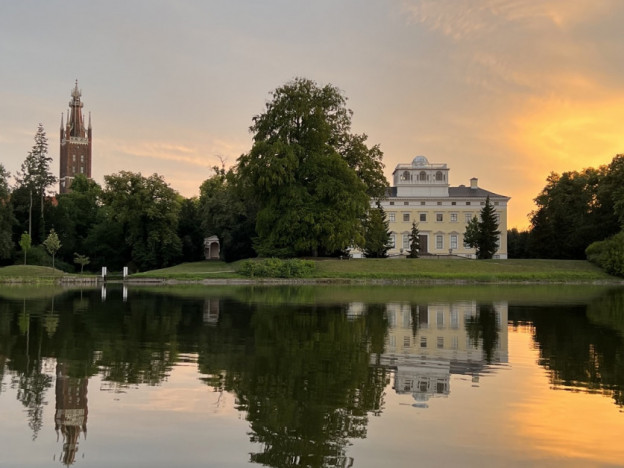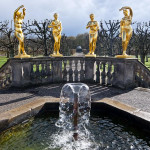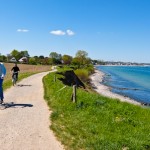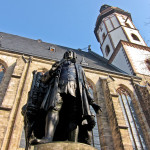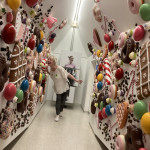Beverley Watts uncovers her guide to Saxony-Anhalt, home to Germany’s highest concentration of UNESCO World Heritage Sites and a witches’ dancing ground
With turreted castles, mystical mountains, elegant gardens, and some excellent wines, Saxony-Anhalt is also blessed with a beautiful natural landscape. Midway between Hanover and Berlin, a zone once within the Eastern Bloc, the state was re-established in 1990. If you’ve only ever visited Germany to cruise down the Rhine, then this part of former East Germany is ready to surprise you with its rich cultural history and peaceful countryside.
A Special Biosphere
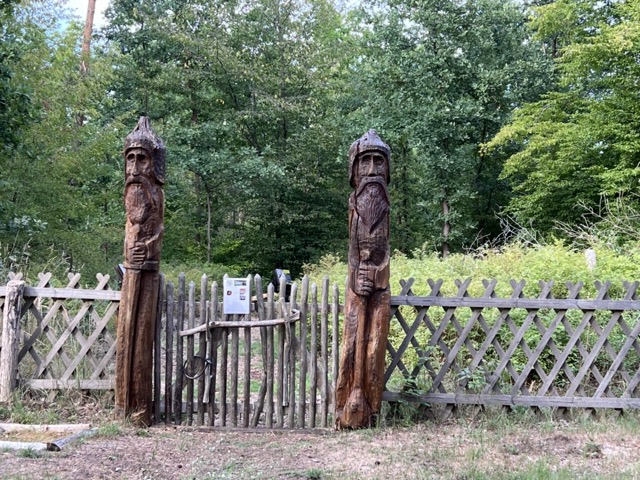
The largest section of the Elbe River Landscape, a glacial valley idyll recognised by UNESCO, sits within Saxony-Anhalt. The Middle Elbe Biosphere Reserve stretches along the Elbe river northwest from Wittenberg, where Martin Luther initiated the Protestant Reformation. Wildlife has been protected here since 1923 and the area has gradually been expanded to 430 square kilometres, with a vast interconnected water meadow floodplain populated by beavers, wolves and tiny pipistrelle bats. (These matchbox-sized flying mammals, which feed on mosquitoes, can devour 3,000 insects a night.)
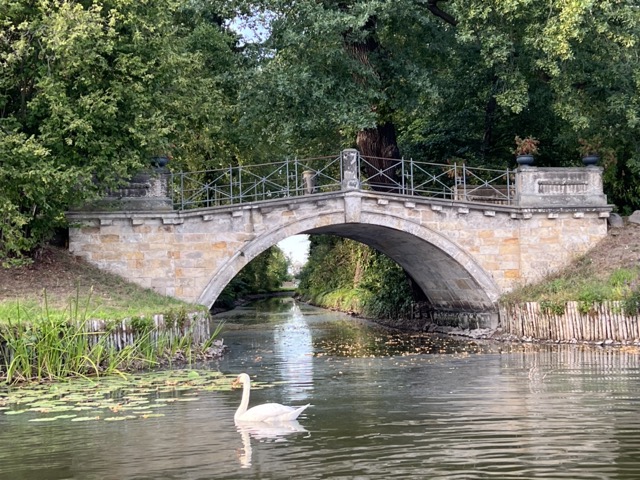
I visited on foot but cyclists love this extensive riverscape ecosphere and the Elbe Cycle Path links the reserve to other UNESCO World Heritage Sites including the Bauhaus Museum Dessau and Worlitz Park. The Garden Kingdom of Dessau-Worlitz is a huge cluster of connected parks, planned out in the 18th century by German royal Leopold III and inspired by English and Italian design.
Leopold’s Landscape
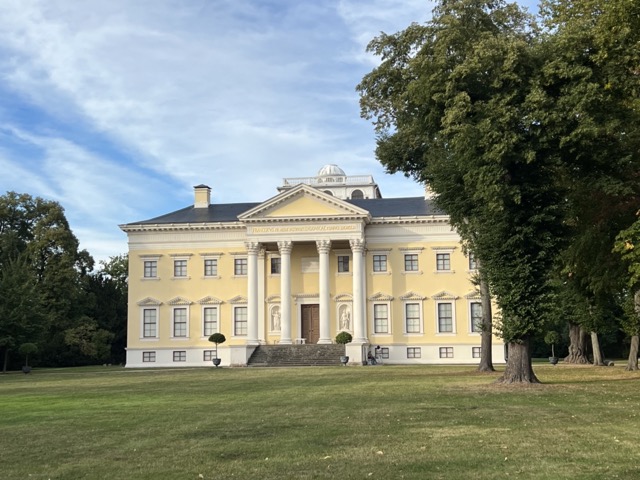
Worlitz Park has replicas of Roman temples amongst the trees and Worlitz Castle is a classical palace with a Corinthian pillar portico and a rather bizarre interior. On Worlitz Lake is Europe’s only artificial volcano, created by Leopold in the 1760s as his own homemade Mount Vesuvius. He liked to orchestrate eruptions to entertain his friends. Fortunately, as well as a penchant for follies, he did oversee many social reforms. Visitors can enjoy a gentle sunset sail on Lake Worlitz, with gliding swans trailing the rowing boat as the water reflects the peach-washed sky.
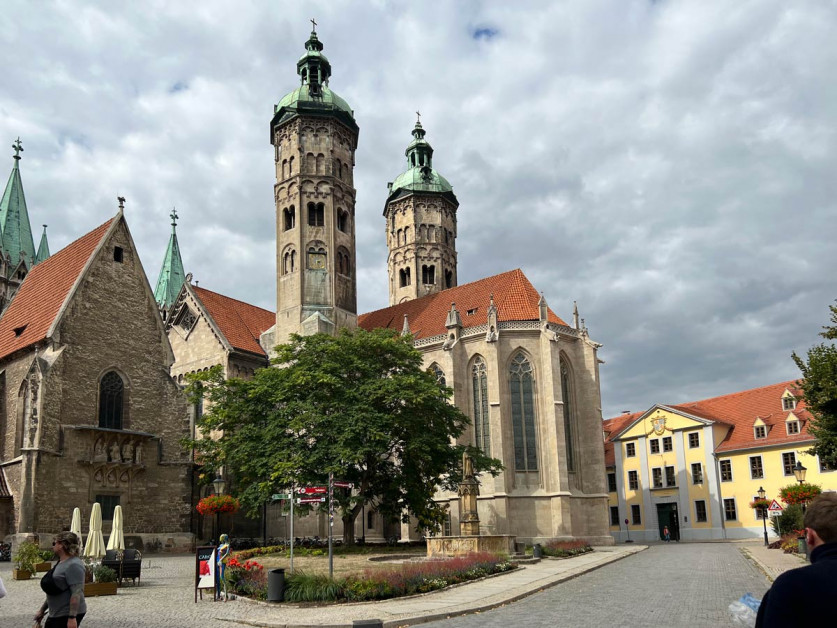
Another Saxony-Anhalt UNESCO splendour is 13th century Naumburg Cathedral, full of Gothic artworks including 12 life-size statues by the Naumburg Master. This anonymous medieval stone sculptor produced some of the most important carvings of the European Middle Ages. Stern-faced Uta von Ballenstedt, one of those the Master depicted, is believed to have inspired Walt Disney’s Evil Queen in Snow White and the Seven Dwarfs. (Maybe Leopold III and his pastiche park was one of the inspirations for Disney’s Magic Kingdom too…)
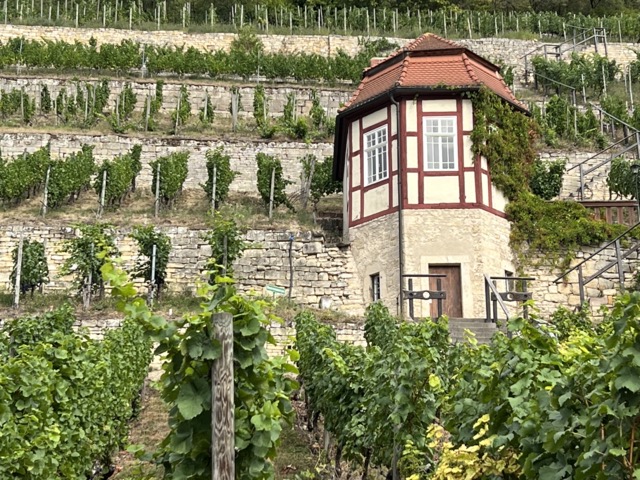
Pretty Freyburg, very close to Naumburg, is known for its historic town centre, 11th-century castle and impressive wine. In Germany‘s northernmost wine region, the Ducal Vineyard is a picturesque terraced estate with very steep slopes, founded in 1153. If you stop for a little wine tasting, a walk to the top will soon have your calf muscles twitching. There are 60 grape varieties cultivated here include Pinot Blanc, Pinot Noir and subtle and refreshing Sylvaner. It’s not all about fruity Riesling in Germany.
Harz Ancient Tales
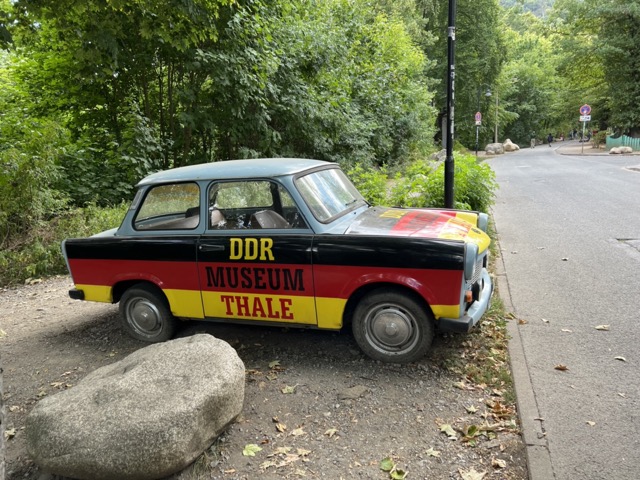
Heading west, the Harz mountains are full of mystery and dark, haunting legends. Make time before your ascent to visit the DDR Museum (DDR stands for Deutsche Demokratische Republik) in the town of Thale. Learn more about everyday life for East Germans between 1949 and 1990. Trabant cars were produced until just after the fall of the Berlin Wall and the museum displays interesting items that represent everyday life. The Trabant car was made with recycled waste and the 1957 model is said to have had no turn signal, no seat belts or fuel gauge and used an oil/gas mix. Despite this, it was loved and still is by many enthusiasts.
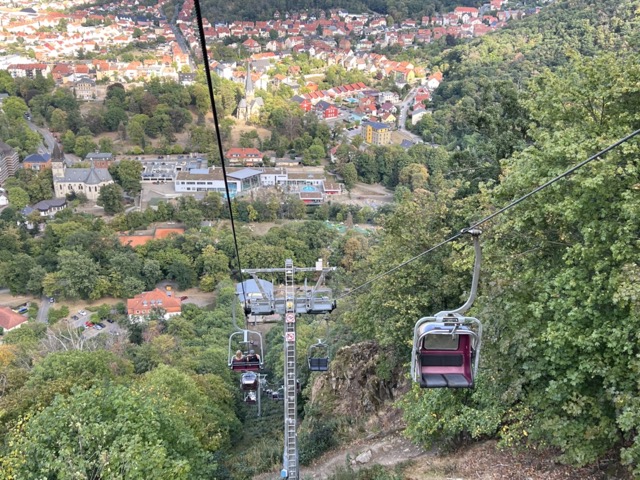
From Thale, I took the chair lift to the Rosstrappe, a 403-metre-high granite crag which looms over the Bode Gorge. If you’re not one for dangling in mid-air, it can be reached by road. At the summit, as you peer over the edge into the valley, there appears to be a massive hoofprint in the hard granite. Here, according to legend, Princess Brunhilda leapt across the chasm on her husband-to-be’s giant horse to escape their wedding and the horrible hulk’s eager clutches.
The Harz forests were long believed to be inhabited by spirits, devils and witches and the Hexentanzplatz (Witches‘ Dancing Place) was once an important pagan site where forest and mountain goddesses were honoured. Today, the formidable and sinister-looking Walpurgis Hall is located there, decorated inside with scenes of Walpurgis Night.
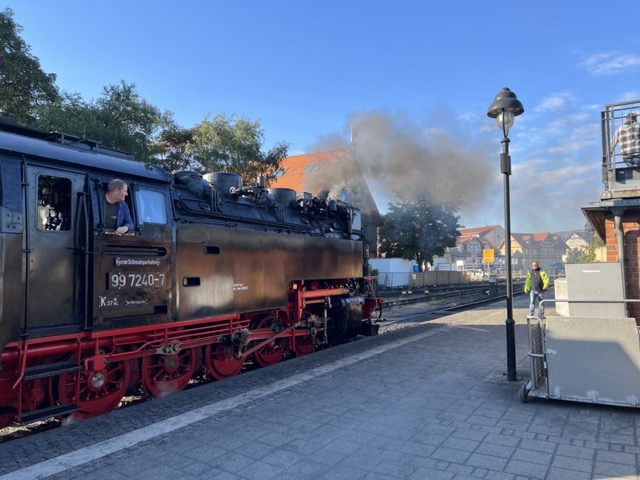
In Goethe’s play Faust, the legendary Brocken witches meet on Walpurgis (30 April – 1 May) at Devil’s Chancel and Witches’ Altar to dance with Satan. The Brocken is the highest peak in the Harz – and the windiest place in Germany – often covered in clouds of mist. If you choose not to hike up, as Goethe did in 1777, there’s a narrow gauge steam train to the summit from Wernigerode. On board, schnapps is offered to fortify passengers on the journey.
The spruce trees en route aren’t as lush as they once were because they’re fighting off bark beetle. Sparks from the train are also a peril for dry woodland but conservationists are confident that beech thickets are gradually repopulating the slopes.
Eastern Bloc Secrets
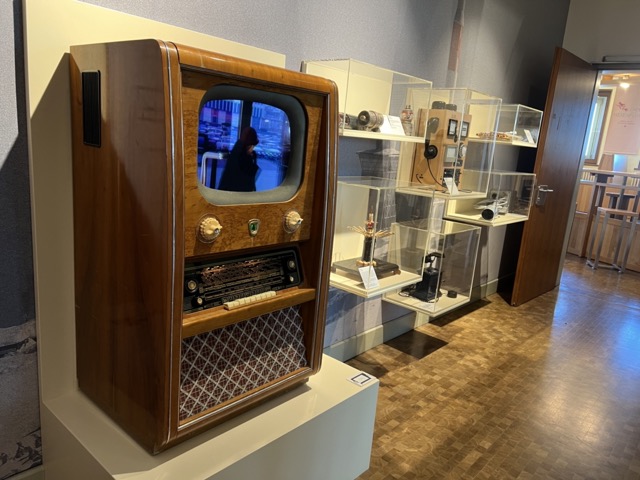
Before German reunification, the Brocken was used for espionage with powerful listening stations installed at the top, an important spying location for both the Stasi (East German secret police) and Russian surveillance teams. Now the Brockenhaus museum is sited in the Stasi’s old building and you can see an exhibit of bugging devices from the German Democratic Republic. It’s a fascinating display.
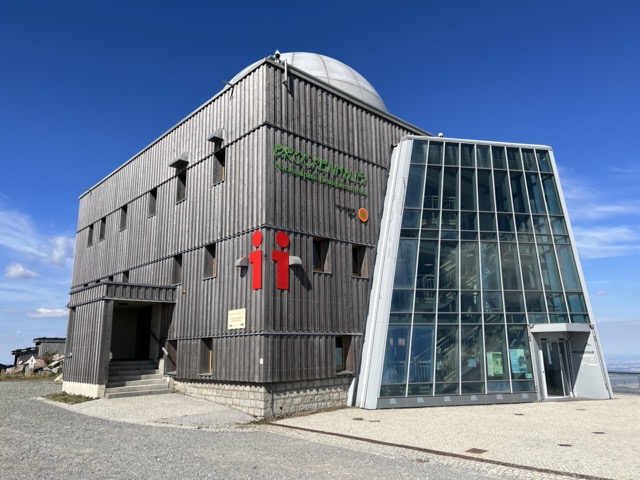
Back down in Wernigerode, situated by the Holtemme River, the amazing Gothic buildings include one of the most stunning town halls in Europe with a timber facade dating from 1498. It looks like an illustration for one of Grimms’ Fairy Tales or, of course, a Disney park fantasy… but this pointy-spired confection of a structure is definitely the real deal.
All images (C) Beverley Watts
Tell me more about Saxony-Anhalt
I arrived in Berlin and travelled by train across Germany but there are direct flights from the UK to Leipzig/Halle Airport, which is closer to Saxony-Anhalt. Leipzig is an attractive city well worth exploring. On a medieval trade route, it grew to become an important centre for music and retains many historic buildings.
Unlimited travel by rail, tram and bus anywhere in Germany will soon cost just €49 per month. The German Embassy in London has announced ‘the digital Deutschlandticket’, due to be available from January 2023. The aim is to cut C02 emissions and help people with the cost of living. Watch out for further updates.
To find out more about travelling to Germany and visiting Saxony-Anhalt go to the German Tourist Board
Where to stay and eat in Saxony-Anhalt
Located in the Harz mountains, the 4-star Schlosshotel Blankenburg hotel is committed to sustainability. It has a GreenSign Level 4 rating and the restaurant was awarded the Greentable Seal in 2022 for above-average ecological and social responsibility. Schlosshotel Blankenburg sits just below Blankenburg Castle, a Baroque treasure high on a limestone hill reached by cobblestone paths. The castle was an important Saxon Duke’s residence in the 12th century, fell into decay but is still quite magnificent.
In Freyburg, the Weinhotel Freylich Zahn is a very stylish hotel converted from an old warehouse. The cellar 51° Restaurant & Weinbar, below the hotel, has the perfect wines to accompany your meal, whether it be salmon fillet with potato pesto crust or corn-fed chicken breast filled with morel mushrooms.

